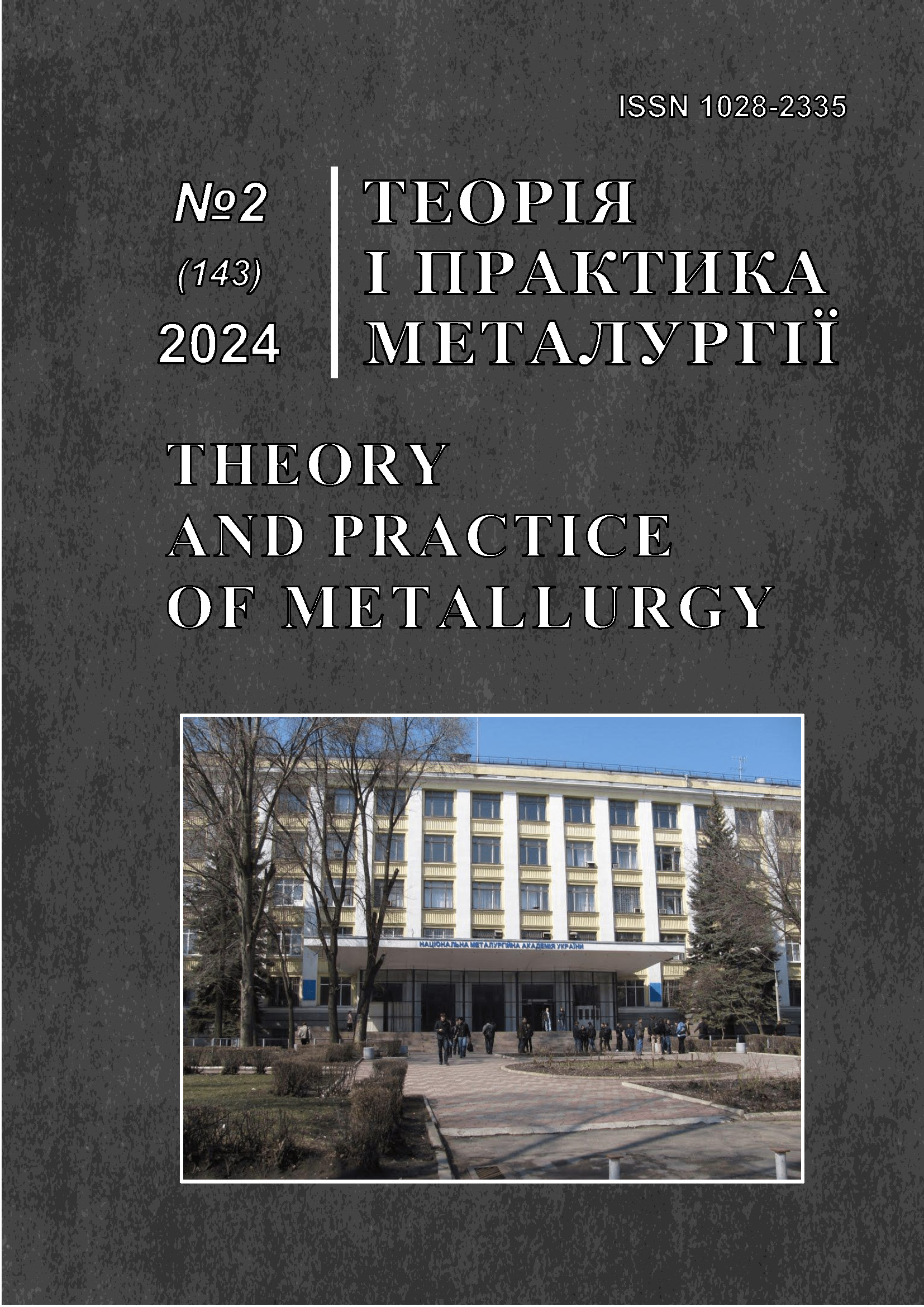Thermokinetic studies of the process of secondary reduction of silicon carbide materials
DOI:
https://doi.org/10.15802/tpm.2.2024.05Keywords:
silicon carbide, kinetics, resistance furnace, man-made deposits, temperature zones, reduction reaction front, secondary materialsAbstract
Purpose: Silicon carbide, a constant leader in the field of ceramic materials with extreme properties, today faces the challenge of sustainable development. Despite a wide range of applications: from the production of abrasive tools, high-temperature heaters, refractory ceramics to metallurgy, traditional methods of SiC production are associated with high energy consumption and a significant environmental footprint. The bulk of silicon carbide is produced in resistance furnaces using the Acheson method. One of the issues in the silicon carbide production process is the low yield of marketable products, which is 15-19% of the load weight. Modern trends in the creation of energy-efficient and environmentally friendly technologies encourage the use of secondary materials. This work investigates the possibility of obtaining metallurgical-grade silicon carbide from waste from electrothermal production, which will reduce the anthropogenic load on the environment and reduce the cost of the final product. Methodology: Laboratory studies of the thermokinetics of the process of secondary silicon carbide reconditioning were conducted, the chemical composition of the resulting silicon carbide-containing product was determined. Results and scientific novelty: The possibilities of secondary materials reconditioning for electrothermal production were investigated. Studies of the obtained silicon carbide-containing materials were conducted. According to the results of the studies, directions for the use of the specified product were determined. Practical value: Utilization of secondary materials will reduce the amount of waste sent to landfills and reduce the risk of environmental pollution by harmful substances. Creation of a closed production cycle: The introduction of secondary raw material processing technologies will contribute to the creation of a closed production cycle, which is one of the key principles of sustainable development.
References
Boecker, W .D. (1997). Silicon Carbide: From Acheson Invention to New Industrial Products. Paper Fachberichte, (5), 244-251
Derevyanko, I. V., & Zhadanos, A. V. (2015). Researching of thermophysical processes in Acheson furnace for the production of silicon carbide. In Proceeding of The Fourteenth international ferroalloys congress INFACON XIV “Energy efficiency and environmental friendliness are the future of the global Ferroalloy industry”, Ukraine, Kiev, May 31-June 4, 2015, Vol. 2, pp 555-560. (https://www.pyro.co.za/InfaconXIV/555-Derevyanko.pdf)
Porada, A. N., & Hasyk M.Y. (1990). Elektrotermyia neorhanycheskykh materyalov. Metallurhyia
Kats, Y. S. (1975). Osnovnye zakonomernosty protsessa poluchenyia karbyda kremnyia v promyshlennoi elektropechy soprotyvlenyia. Trudy VNYYASh, pp. 44-51
Zubov, V. L., & Hasyk, M. Y. (2002) Elektrometallurhyia ferrosylytsyia. Systemnye tekhnolohyy
Derevianko I. V., & Zhadanos O. V.(2014). Otsinka tekhnohennoho rodovyshcha elektrotermichnoho vyrobnytstva karbidu kremniiu z metoiu vyluchennia metalurhiinoho SiC i hrafitu. In Materialy Pershoho naukovopraktychnoho semi-naru (10–14 lystopada 2014 r., m. Truskavets). Derzhavna komisiia Ukrainy po zapasakh korysnykh kopalyn (DKZ) (pp. 150-154). https://surl.li/gyjnyz
Downloads
Published
How to Cite
Issue
Section
License
Copyright (c) 2024 Derevyanko I.V., Zhadanos O.V., Yaroshenko Ya.O., Nadtochiy A.A.

This work is licensed under a Creative Commons Attribution 4.0 International License.
Authors retain copyright of the published papers and grant to the publisher the non-exclusive right to publish the article, to be cited as its original publisher in case of reuse, and to distribute it in all forms and media. Articles will be distributed under the Creative Commons Attribution 4.0 International (CC BY 4.0) licence.
Authors can enter the separate, additional contractual arrangements for non-exclusive distribution of the published paper (e.g., post it to an institutional repository or publish it in a book), with an acknowledgement of its initial publication in this journal.




